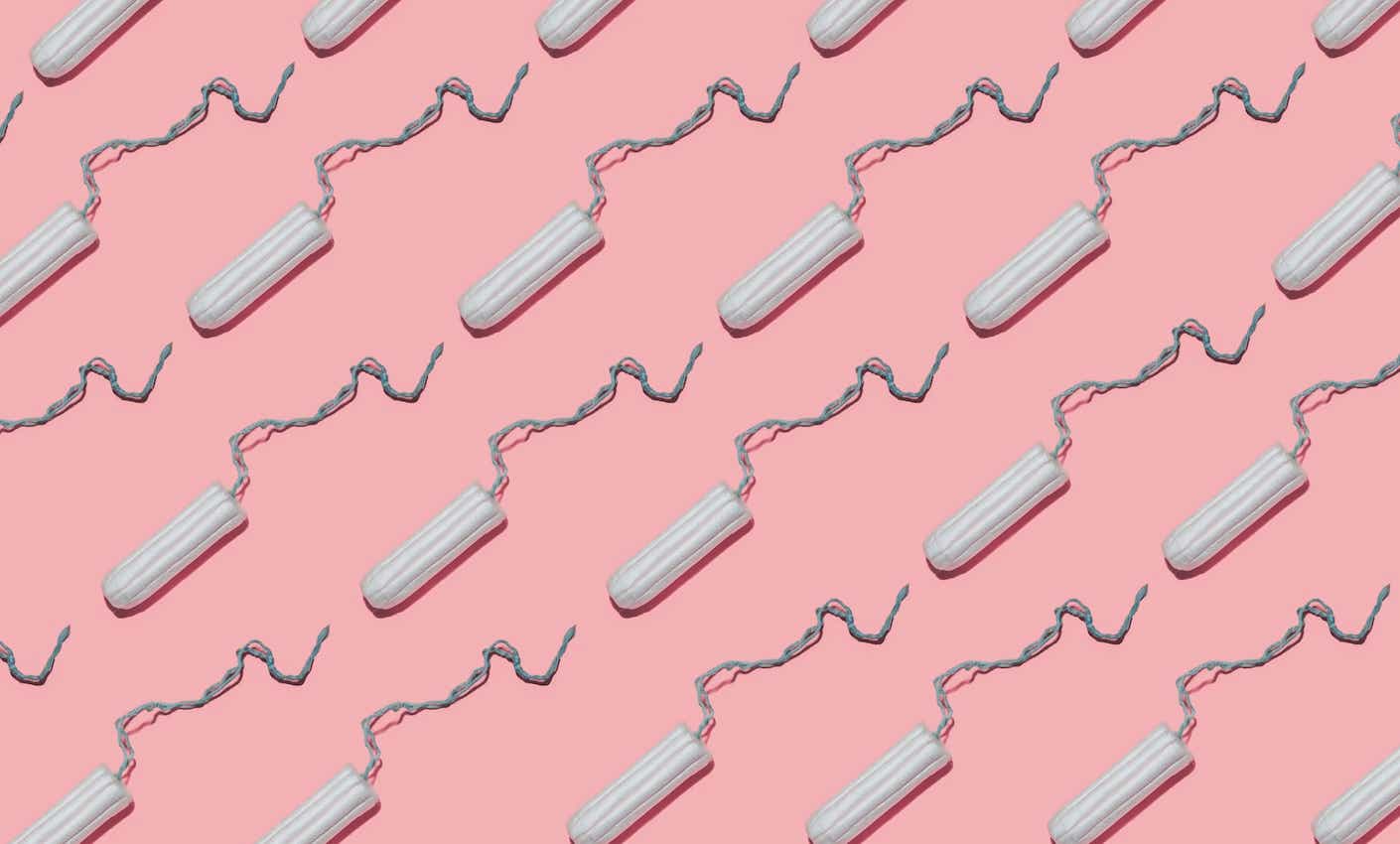If you get a period, tampons are everyday essentials you probably just buy on autopilot and don’t give a second thought. You head to the grocery store or pharmacy, grab a box of the same brand, and re-up when necessary. But tampons have a big job: To absorb and lock in your period flow without causing discomfort. Even though they’re little and seemingly simple, there’s an insane amount of research that goes into ensuring the tampons that end up in your bathroom are both effective at the job and completely safe to be inside your body for hours. So we’re pulling back the applicator for a peek into the average tampon: We’ll tell you how it’s made, why that matters, and why wearing a tampon is just as safe for your body as drinking a glass of water.
What are tampons made of?
Call it obvious, but a tampon’s main job is to absorb liquid. That’s why they’re generally made with the most effective absorbers out there: either cotton, rayon (a material made from purified wood pulp), or a blend of the two. Not only do they absorb menstrual fluid quickly, but they can also expand to prevent your tampon from leaking.
Decades ago, manufacturers used chlorine to bleach wood pulp, which could result in traces of the environmental pollutant dioxin. But cotton and rayon manufacturers no longer use chlorine in their purification process, making any concerns about dioxin a thing of the past.
In addition to being absorbent, inserting and removing tampons should be as comfortable as possible. Tampax and most other tampon companies achieve this by coating the tampon in a thin layer of the polymers polyethylene and polypropylene. Just two years ago, the NIH conducted a safety assessment of Tampax and other tampons. In addition to independently concluding that the cotton, rayon, and polymers used in tampons are safe, they noted their findings are supported by “a vast body of safety data and a long history of safe use in the category.”
If you’re at all concerned about the ingredients in a certain tampon, some brands like Tampax disclose detailed information on ingredient safety on their website, package, or on SmartLabel, a platform that lists the ingredients in various OTC products. That way, you’re armed with the information you need to make the right choice for you when it comes to period products.
Are tampons safe?
When discussing tampon safety, many of us automatically think of Toxic Shock Syndrome (TSS), a full-body systemic bacterial infection caused by a specific strain of Staphylococcus aureus bacteria. Even though TSS is associated with tampon use, only about half of TSS cases are associated with tampon use — it can come from skin infections, surgical procedures, or other vaginally inserted devices like a menstrual cup, diaphragm, or contraceptive sponge. And it’s not just something women can develop — in fact, anyone can get TSS, including men and children. It’s also extremely rare — in the US, only about one to three people per 100,000 are diagnosed with TSS.
Though serious, TSS is rare and treatable (you’re more likely to die from being struck by lightning). If you’re concerned about TSS, watch for flu-like symptoms like a high fever over 102° F, body or joint aches, nausea and/or vomiting, diarrhea, dizziness or fainting, or confusion, and sometimes a red rash. If you’re using a tampon and notice some of these symptoms, remove it right away, seek immediate medical attention, and tell your healthcare provider you’re concerned about Toxic Shock Syndrome. Aside from knowing the symptoms, reduce your risk even more by changing your tampon every four to eight hours, using the lowest absorbency to manage your flow, and using pads occasionally to interrupt tampon use.
Recently, some have raised eyebrows over the idea of there being trace metals in tampons. In response, the FDA commissioned an independent study last year which concluded that tampons are safe to use, containing no more trace metals than drinking water does.
Speaking of the FDA, they’re actually the body that regulates tampons, because they’re officially considered medical devices. That means they’re subject to some pretty strict regulations, and the products from brands like Tampax have to undergo standardized and rigorous testing in order to be considered safe when used as intended.
How to choose the right tampon for you
This decision really comes down to what you find most comfortable, and luckily there’s no lack of tampon options on the market. It’s recommended that you use the lowest absorbency tampon needed, and most women find their flow can vary pretty drastically over the course of their cycle. Tampax offers five different absorbency options ranging from light to ultra, so you should never have to reach for a regular on a super-plus day.
So the next time you reach for a tampon, rest assured that it’s gone through rigorous testing to ensure it’s safe for your body. In addition to being safe, Tampax products also offer comfort and reliability, which is why they’re the number one tampon brand recommended by U.S. OB-GYNs. Whatever period product you choose to use, you should feel empowered to be in full control of your comfort and health. Because let’s be real: When it comes to your vagina, ignorance is not bliss.









